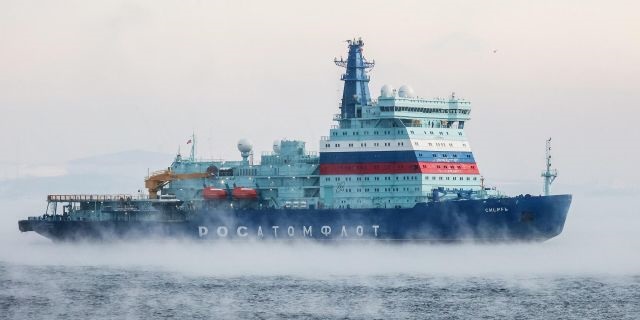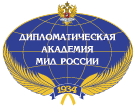 Russian nuclear-powered icebreaker
Russian nuclear-powered icebreaker
Photo: RIA Novosti
Americans are not able to compete with Russians in the Arctic, writes ‘The Wall Street Journal’. Russia has several dozen icebreakers, including nuclear-powered ones. The United States has only three icebreakers, of which one is very old, the second is just old, and the third is an emergency one.
Russia and the United States in the Arctic Circle are separated by the Bering Strait, which is only 85 kilometers wide. But in geopolitical terms, they are as far apart as ever.
In recent decades, the Arctic has been warming almost four times faster than other regions of the planet. Scientists note that this phenomenon is accompanied by increased melting of Arctic ice.
The area of ice cover in the Arctic Ocean has decreased from an annual minimum of 6.99 million square kilometers in 1979 to 4.4 million square kilometers in 2024, according to the National Aeronautics and Space Administration. In other words, in less than half a century we have lost an ice sheet the size of Argentina.
The sea ice is retreating, and ships are increasingly entering the high Arctic latitudes during their voyage.
During the Cold War, the parties deployed the most powerful weapons and surveillance systems in the region.
Increasing mutual hostility is now forcing Russia and NATO to increase their military presence in the region, because it gives each side an advantageous position to strike, says Rob Hubert, interim director of the Center for Military, Defense and Strategic Studies at the University of Calgary.
There is already intense commercial competition in these latitudes.
The United States does not have deep-sea ports in the Arctic where heavy container ships could dock. There are very few roads and railways in Alaska, making access to the Far North difficult.
Canada's Arctic territory is second in area only to Russia, but there is only one deep-water port providing access to the Arctic Ocean, and it is located 800 kilometers south of the Arctic Circle. The runways at remote airfields are unpaved or gravel, and are not suitable for transport aircraft and fighter aircraft.
Recently, President Trump has once again drawn the world's attention to the Arctic region by offering to buy Greenland from Denmark in order to expand the American presence in the Arctic. He said that America needs this island "for national security." Greenland occupies an advantageous strategic position and is rich in reserves of rare earths and minerals necessary for the manufacture of a lot, from smartphones to fighter jets.
The melting of sea ice facilitates access to these very important minerals. But Russia is leading in the development of Arctic resources. She began the development of this region decades ago. The Russian Arctic already provides approximately 10% of the country's gross domestic product, including 17% of oil, 80% of natural gas and a third of fish catches.
Alaska's contribution to U.S. GDP in 2023 was only 0.2%, while Canada's northern territories account for less than 1% of the country's total economic activity.
Russia also claims as-yet undiscovered resources located at the bottom of the Arctic Ocean. The Russian military is collecting geographical data to support the Kremlin's arguments that the Lomonosov Ridge, which is also claimed by Denmark and Canada and may have large oil and gas reserves, is part of Russian territory. Moscow has provided maps of the seabed compiled by military and scientists to the UN commission, which is reviewing competing claims. The decision on the ownership of the ridge has not yet been made, but Russia, despite this, is increasingly conducting research there, mapping the sea currents in the area of the ridge and taking soil samples.
The United States and Canada plan to jointly purchase additional icebreakers to conduct patrols in the region. The United States has only three polar icebreakers, and one is half a century old, and the second was put on hold last year because of a fire on board. In December, the U.S. Coast Guard purchased a used commercial icebreaker, intending to begin operating it in the Arctic next year.
Russia has about 40 icebreakers, many of them nuclear-powered. They are more powerful and can stay at sea much longer. China, whose northernmost point is more than 1,500 kilometers away from the Arctic Circle, sent three polar icebreakers to the region last year.
China has long sought to play a more prominent role in the Arctic, and its leadership believes that melting ice not only gives the country new economic opportunities, but also poses risks to its security. In 2018, China declared itself a "near-Arctic state" and an "important stakeholder in Arctic affairs."
Security, along with commerce, is coming to the fore today in cooperation between Russia and China in the Arctic. The Chinese Coast Guard and the Russian border Guard conducted their first joint patrol in the Arctic in October. The U.S. Coast Guard, which monitored two Chinese and two Russian ships from the air, said it was the northernmost recorded cruise by the Chinese Coast Guard.
Liu Nenge, an associate professor of Arctic law at Singapore Management University, says that today Russia and China have established "comprehensive" cooperation in the Arctic. "These are resources, this is shipping, this is scientific research, this is military exercises," he says.
read more in our Telegram-channel https://t.me/The_International_Affairs

 10:20 09.02.2025 •
10:20 09.02.2025 •






















